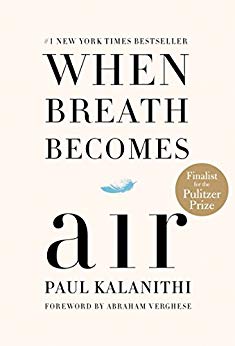

This article is an excerpt from the Shortform summary of "When Breath Becomes Air" by Dr. Paul Kalanithi. Shortform has the world's best summaries of books you should be reading.
Like this article? Sign up for a free trial here .
What is an EGFR mutation of lung cancer? How does it affect diagnosis and treatment?
Paul Kalanithi was diagnosed with lung cancer May 2013. A Stanford educated neurosurgeon, Paul understood a lot of the medical technicalities in his diagnosis. During his diagnosis, Paul finds out he has what’s called an EGFR mutation of lung cancer. The EGFR mutation of lung cancer can increase life expectancy, and Paul found that this bit of good news was enough to give him some hope for the future.
Shortform note: This article and our summary of When Breath Becomes Air is written in a way that allows you to share in the experience provided by the memoir.
Simply reading about the content of the story seems insufficient in expressing the emotional journey. To really provide you with the sensation this book creates, we wrote in the first person, using a voice similar to his. We highly recommend reading the original book for the full experience. Reading the words coming directly from him is a powerful experience we can’t replace.
How to EGFR Mutation Affected Paul Kalanithi’s Treatment and Outlook
Shortform note: Paul explains the EGFR mutation in lung cancer, and how it helped him see possibilities. This also allowed him to shift his perspective into a longer term vision for himself. “Emma” refers to his oncologist, Dr. Emma Hayward.
Emma informed me of two possible avenues for treatment. There was the standard chemotherapy, attacking the cancer from the outside in. But there were other therapies, new discoveries that attacked the cancer from the inside out. I hadn’t realized how many advancements had been made in the treatment of certain types of cancer, and there was evidence that some of these newer therapies led to unthinkable survival rates for some, including people with the EGFR mutation in lung cancer.
This was the kind of discussion I’d had with so many patients. Explaining the approaches, outcomes, and option considerations. Emma was the kind of doctor I wanted—a doctor like me. For Emma, the considerations surrounded my ability to go back to work. This consideration was less of a priority for me, and I told her so. I could forge a different path if I had to. I wanted the treatment that would work the best, even if it meant losing my ability to operate.
My identity as a neurosurgeon had faded with my diagnosis, but here she was, telling me I could possibly be me again. I started to believe perhaps I could be, and that belief was pacifying.
With this possible regathering of my identity came a remembering of my ideals. I’d accepted that death was a part of life. I’d known it was something we all would experience. That truth was no more true simply because I had cancer. I was always going to die, but that hadn’t stopped me from living. Just because the fact of death appeared before I thought it would didn’t mean I should stop now, either.
Certain types of lung cancer have a EGFR mutation of lung cancee, which becomes the target for treatment. This form of lung cancer adds approximately a year to the life-expectancy or the possibility of recovery and survival. A lack of the EGFR mutation of lung cancer dramatically reduces the chance of survival to less than two years.
Where once I had used statistics to inform the guidance I provided my patients, I no longer had the same grasp on their meaning. Knowing the numbers didn’t clarify anything about my experience. They weren’t objective tools anymore. They were subjective barriers.
Lucy and I visited a sperm bank, knowing that any form of treatment could hinder my ability to reproduce. We desired children, had assumed we’d have them when life stabilized after our training was over. We didn’t know whether that future still existed, but we didn’t want to lose our chance at it completely. I would freeze my sperm to keep that door open.
The door seemed to open a little more when we found out my cancer included the EGFR mutation of lung cancer. Thus, treatment would involve a pill, Tarceva, rather than chemo. I started treatment, and as the days and weeks passed, I grew stronger. The curtain that had dropped between me and my future started to lift a little at a time. I felt for the first time what I could only assume was hope.
Shortform note: Paul Kalanithi expresses in thee beginning of When Breath Becomes Air that he had a lot to look forward to, and that losing this vision for his life was devastating. With the EGFR mutation of lung cancer, Paul was able to cling to one of the most important things he had: hope.

———End of Preview———
Like what you just read? Read the rest of the world's best summary of Dr. Paul Kalanithi's "When Breath Becomes Air" at Shortform .
Here's what you'll find in our full When Breath Becomes Air summary :
- How Paul Kalanithi discovered he had cancer
- How Paul coped with his cancer until his very end
- How Paul's wife dealt with his death and found the strength to continue






